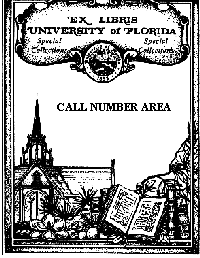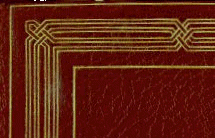- PRE-CATALOGING
- When a book is prepared for cataloging, two copies of the pre-cataloging sheet for the book are prepared.
PRE-CATALOGING SHEET
Date picked-up:___________________
Date returned: ___________________
Title Keyword:
Date of publication:
Unless otherwise noted, always add:
690 -4 Imprint |z Country |z City |y Date.
700/710 All Printer(s), Publisher(s), Bookseller(s)Printed by: use |e printer.
Printed for: use |e publisher.
Sold by: use |e bookseller.Other additions:
Unless otherwise noted, for all 655 -7, the term is followed by:
|z Country |z City |y Date. |2 source.
Some terms, such as Printer's devices, Bookplates, Typefaces, Signed bindings will be followed by:
|x Name, then if indicated the |z |z |y |2. source
The name will always be provided, as will the |2 source abbreviation. Copy specific and local notes will use 500 |5 FUG.If a |e relator term is used, it is always spelled out: bookplate designer, not bpd.
ADDITIONS: - The curator shall determine any additional information that needs to be added to the cataloging record, such as illustrators, binders, publishers, former owners, etc. and terms from the ACRL thesauri for rare books and the GMGPC. These will be added to the record or description in the book. The additions may be given in full or abbreviated form, depending upon the cataloger's familiarity with the structure of the addition. The names may not be typed out on the sheet; they may be in the form of LTLC print-outs with the relator term added.
500: : |a "A few copies only are printed of this large paper edition of Life and Phantasy"--Verso half-title.
500: : |a Engravings by the Dalziel Brothers.
500: : |a From the Irish collection of E. Byrne Hackett.|5FUG
655: 7: |a Wood engravings |z England |z London |y 1889. |2 gmgpc.
655: 7: |a Large paper printings (Publishing) |z England |z London |y 1889. |2 rbpub
690: 4: |a Imprint |z England |z London |y 1889.
700:1 : |a Millais, John Everett, |c Sir, |d 1829-1896, |e illustrator.
700:1 : |a Hughes, Arthur, |d 1832-1915, |e illustrator.
710:2 : |a Reeves and Turner, |e publishers.
710:2 : |a Dalziel Brothers, |e engravers.
700:1 : |a Hackett, Edmund Byrne, |d b. 1879, |e former owner. - Before the book is placed on the To-be-cataloged shelf in the processing room, it shall:
- Have a bookplate attached to the front pastedown endpaper with two small (pinhead) drops of PVA glue at the top two corners. It is to be placed so that it does not obscure any bookplates or markings. If this is not possible, it should be placed so that the already present markings or bookplates can be seen if the U of F bookplate is turned up. If it is truly impossible to attach the bookplate to the front pastedown, it will be placed on the verso of the front free endpaper.


- Have an acid free paper slip 2½" in width. The slips will be marked with the location: Rare Books, Howe, Reference, Ishill, etc. If the book is 31-40 cm., the slip will be marked "Oversize"; "Folio" if over 40 cm. They are placed between the paste-down and free front endpapers.


- Be stamped "Univ. of Florida - FU" along the inner margin of the title-page verso with black ink. If the stamp would interfere in any manner with the aesthetics of the books - such a being near an illustration or holograph annotation that might later be scanned or photographed, the verso of the next leaf should be stamped. The purpose is to be noticeable, but unobtrusive.

- Be placed in an acid-free envelope if a pamphlet, with "Rare Book Collection" stamped on the upper left corner; the call number will be written below.
- The sheets will be placed in the book, one of which may have other accompanying matter stapled to it, which may include the invoice or dealer's description of the book.
- Have a bookplate attached to the front pastedown endpaper with two small (pinhead) drops of PVA glue at the top two corners. It is to be placed so that it does not obscure any bookplates or markings. If this is not possible, it should be placed so that the already present markings or bookplates can be seen if the U of F bookplate is turned up. If it is truly impossible to attach the bookplate to the front pastedown, it will be placed on the verso of the front free endpaper.
- When a book is prepared for cataloging, two copies of the pre-cataloging sheet for the book are prepared.

